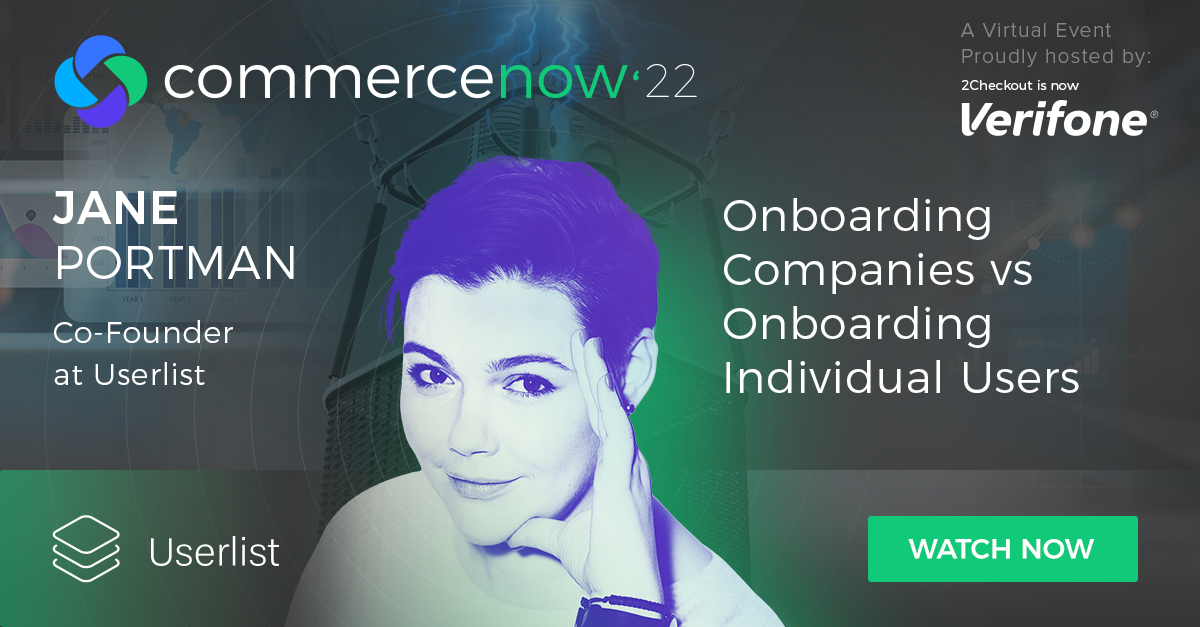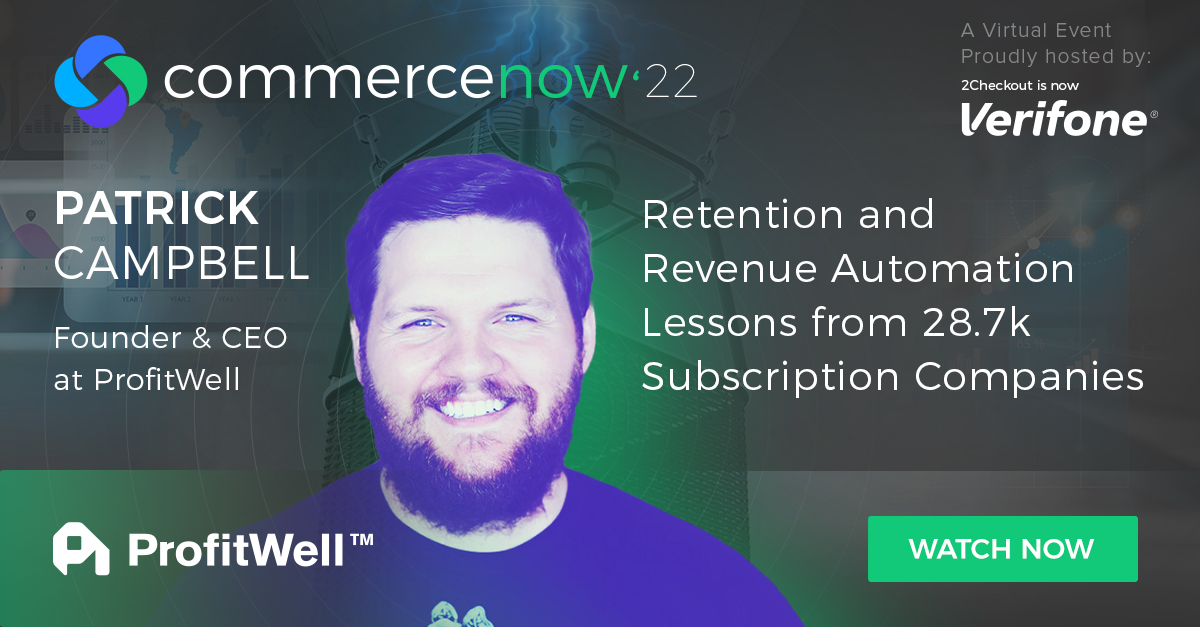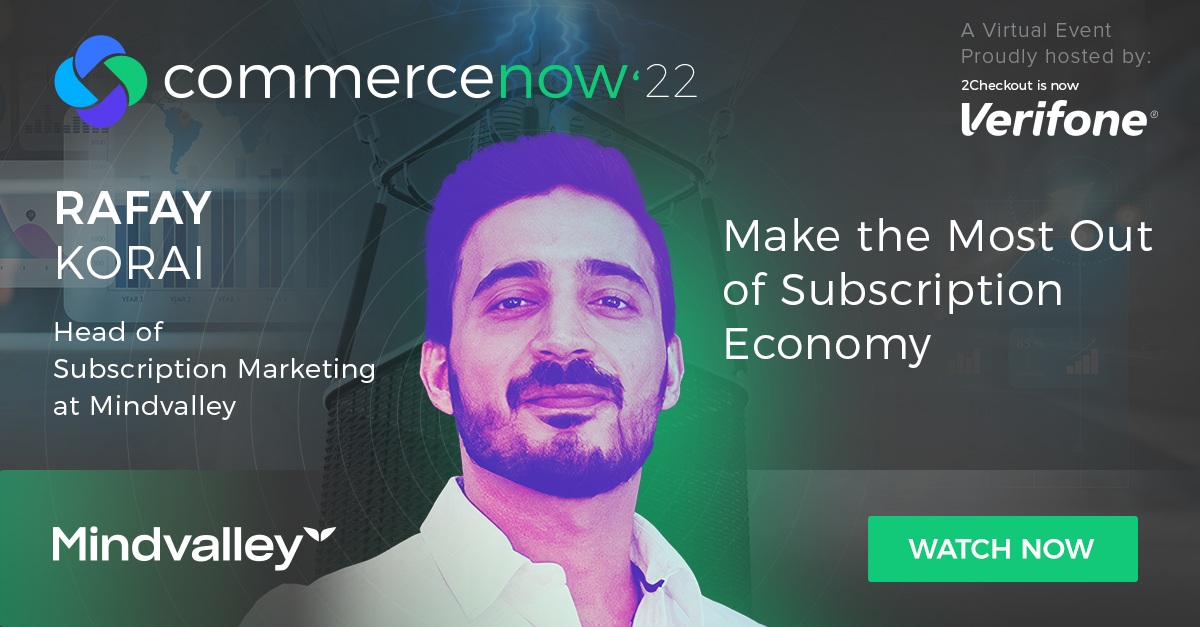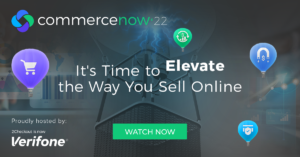During the sixth and most recent CommerceNow conference, held this past June, participants were treated to a comprehensive and highly informative program of virtual sessions from the foremost experts in the eCommerce industry.
Hosted by 2Checkout (now Verifone), the event included founders, CEOs, marketers, sales reps, and revenue leaders, all sharing their acumen, strategies, and expertise. In this third in a series of blog posts, we’ll share key takeaways from several of our CommerceNow ’22 sessions.
You can also register to watch all recorded webcasts here.
“Onboarding Companies vs. Onboarding Individual Users” was the topic at hand for Jane Portman, co-founder of Userlist. Jane addressed the tug-of-war B2B SaaS businesses face: are they most interested in the individual users, or the overall company account?
“We call it ‘user onboarding,’ but it really has little to do with individuals,” Jane pointed out. “It’s really more about an account.”
One way to make sense of this, Jane explains, is to consider the Customer Journey Map. From Day 1, a typical account goes from account onboarding with trial users, to paying and advanced customers who might promote features and share pro tips, to cancelled customers with a survey measuring why they left.
The complexity arises when you consider the individual team members/users on that account, Jane points out. The users all get involved at different points in the journey, and you need to understand and support them at their own entry point. Which means an onboarding campaign can look different for each user within the account, Jane added.
So, what should be done on the account level and what should be done on the user level, without repeating content? Jane suggests that the account level can be about account health and state, while the individual user level can be more about education and tips/tricks.
Jane emphasized that it’s key, with individual users, to understand where they are: is this their first time using the product? Are they joining during the trial, or after?
How to implement this? Jane first points out the problems:
- Tools don’t support the company account level
- The data is duplicated
- Complex relationships can’t be represented
- Campaign can’t be triggered based on companies
To solve these issues, Jane suggests using the account-level concept: account-level data model, email automation, and user onboarding. The account level content involves three levels of data:
- Company level—name, pricing plan, billing status, etc.
- Relationship level—user’s role or activity for this company
- User level—individual user properties
This way relationships can be replicated from one company to the next, and the effort of organizing the data on these three levels is done behind the scenes. Jane also recommends segmenting by company, not users, with the exception being marketing leads.
Ultimately, she points out, it’s wise to trigger campaigns built on company and user roles. “The goal of user onboarding is to send the right message at the right time, and to not send irrelevant content to your users, which loses you brand points,” she concluded.
Make sure you get all the insights on successfully onboarding your SaaS users and how to orchestrate individual user journeys within a company account by watching Jane’s full session.
___________________________________
Patrick Campbell , founder and CEO of ProfitWell, was a return CommerceNow presenter with his talk titled “Retention and Automation Lessons from 28.7k Subscription Companies.” He presented his framework for how the best brands are successfully automating revenue with a specific focus on retention.
“I have good news and bad news,” Patrick began his talk. “I’ll start with the bad: the market is struggling. The subscription eCommerce data shows what’s happening right now—there was lots of growth with the onset of COVID for both B2B and B2C, but that growth has flattened out.” B2B has suffered less, he pointed out, but has suffered more churn due to shipping issues, inflation, the consumer credit bubble, and the looming possibility of recession.
The good news, Patrick shared, is that whenever there is a potential downturn, as we are experiencing now, businesses tend to refocus on fundamentals. More than ever, customer lifetime value (CLTV) is one of those “fundamentals” that is now of paramount importance. And there are steps businesses can take, Patrick said, that can increase their LTV by 10-60%.
What can hold businesses back, he points out, is the common misconception that retention efforts should address the two opposite ends of the spectrum: your diehard advocates/loyal users on one end and your critics/churned users on the other. Patrick emphasizes that there’s an area between these two extremes that well worth your focus and efforts.
“This is your ‘tactical retention zone,’ the area where you can tweak your approach and keep those who might churn, are about to churn, or have recently churned from doing so,” Patrick said. This tactical piece can be as much as 25 to 40%, he pointed out, and if focused on can result in a significant payoff.
Patrick explained that retention can be measured by three things, essentially, and there are effective tactics to be employed with each:
- Active cancellations
- Expansion revenue
- Payments failure
Turning Cancellations Into Longer Term Lengths or Win-backs
“One of my favorite tactics is targeting your plan optimization or term length—getting your quarterly customers to pay annually or your annual customers to pay for two years,” Patrick explained. This is an easy tweak that can really boost your LTV, he said.
The problem, however, is that most businesses only ask for someone to go on a longer-term plan at signup, when users haven’t experienced any of the long-term benefits of your product. It’s better to approach customers one to four months into their plan to ask them to upgrade and make that upgrade easy and seamless.
What proportion of your plans should be longer, one might ask? Patrick recommends that the lower-cost/month should be annual, with higher-cost plans on shorter terms to take out the sting.
Another tactic, Patrick pointed out, is win-backs and triage cancellations. “When a customer wants to leave, it’s better to make it easy because they are more likely to come back. But ask them a couple of questions: why are you leaving? What did you like about the product?” Patrick advised. Some users may reconsider, but even if they do leave this information is valuable and answers questions that can help you prevent future churn.
This is also a good time to make a special offer to keep these users on board, he suggested. Let them transition to a cheaper plan for XX amount of time, put them on a maintenance plan, or let them “pause” for 30 days. You could lower cancellations by 10-25%, Patrick said, with salvage offers and offboarding.
“It’s also okay to ‘play chicken’ and just say okay, we’ll be here when you want to get started again,” Patrick pointed out.
Focus on Expansion Revenue With Your Happy Customers
Patrick recommends that 20% of your revenue come from existing customers. “The future of growth is around multi-product offerings, and multi-product companies growth is 30 to 50% higher than single-product companies.”
Add-ons are a great way to do this, he said, yet are the most underutilized tactic of subscription companies, even when the LTV increase can be 18 to 54% higher for companies with at least one add-on.
He encouraged business to focus on value metrics—what they are charging for the customer should be based on the value they are getting, instead of actual product features. “Value metric pricing correlates with much higher growth than traditional feature-differentiated pricing, due to lower cancellations and improved expansion revenue,” Patrick said, sharing graphs that show examples of possible growth with value metric pricing.
Don’t Lose Your Customers Due to Payment Failures
“Payment failures are purely a mechanical or tactical problem, and are relatively easy to solve,” Patrick pointed out. Yet payment failures are the largest single bucket of lost customers, he explained, because businesses aren’t good at recovering payment failures, with only 30 out of 100 customers recovered after payment failure.
Ways to get these customers back:
- Expiration tracking. Don’t use mass email without research; a generic blanket approach can increase active cancellations. These are the emails that go immediately into your users’ trash or are ignored.
- Tactical retries. Make sure “Smart Retry” is turned on unless you’re willing to put more effort and strategy into hunting down users’ new payment details. In-app notifications and SMS reminders are the most successful, but plain-text emails from an individual at the company can do well, too. Also key: Make sure to make it easy to update their payment info, with no sign-in needed; consider offering Google or Apple Pay.
To learn more about hyperboosting your SaaS strategies and upgrade your blueprints for increasing your revenue, make sure to watch Patrick’s full session here.
________________________________
Rafay Korai, head of subscription marketing for MindValley, wants businesses to consider pivoting to subscriptions, if they aren’t already. His presentation “Make the Most Out of the Subscription Economy” addressed the ways to do that, and why it will benefit your business and your customers.
The subscription economy has grown dramatically over retail in the last 10 years, Rafay pointed out. Research shows that subscription-based businesses have been resilient through COVID, with eight out of ten sustaining or growing the subscriber base. And annual churn is at an all-time low, from 6.1% in 2018 to 5.4% to 2021.
Rafay talked about some of the ways that customer value improves when businesses pivot to subscription, and it’s not only top-of-funnel. It’s customer-led, not product-led, he emphasized, and it forces businesses to learn and evolve with the customer, gives the business the opportunity to build relationships and a community, and establishes that it values trust.
Rafay talks about the key tactics to keep in mind when evolving to the subscription model:
- Make sure onboarding is easy. Constantly work on engaging more customers and improving your messaging.
- Ask how you can remind them that they’re getting value, so they’ll share that news with others.
- Under-promise and overdeliver. Constantly listen to customers, look at data points, and make improvements to avoid cancellation.
- Remember that it’s not a one-way street, where you give them the product and move on. Work to build the relationship.
- Your super-users can provide invaluable understanding about their values, and help you align them with your company’s values.
Ultimately, the benefits of subscription, Rafay said, are a scalable model and easier collaboration:
- Teams are only building for customer value
- It’s easier to be aligned with the overall vision
- One product, one offer
- Ease in metrics
“There are so many ways to move into subscription that bring value and make life easier,” Rafay concluded. “Being a customer-led company is what makes it work, not being product-led. Be obsessed with your customer and what gives them value.”
Discover all the inside scoop on how subscription pivot can accelerate your company growth by watching Rafay’s full session here.
To access and benefit from more actionable tips and tricks from the experts from this year’s CommerceNow, view all sessions here.



